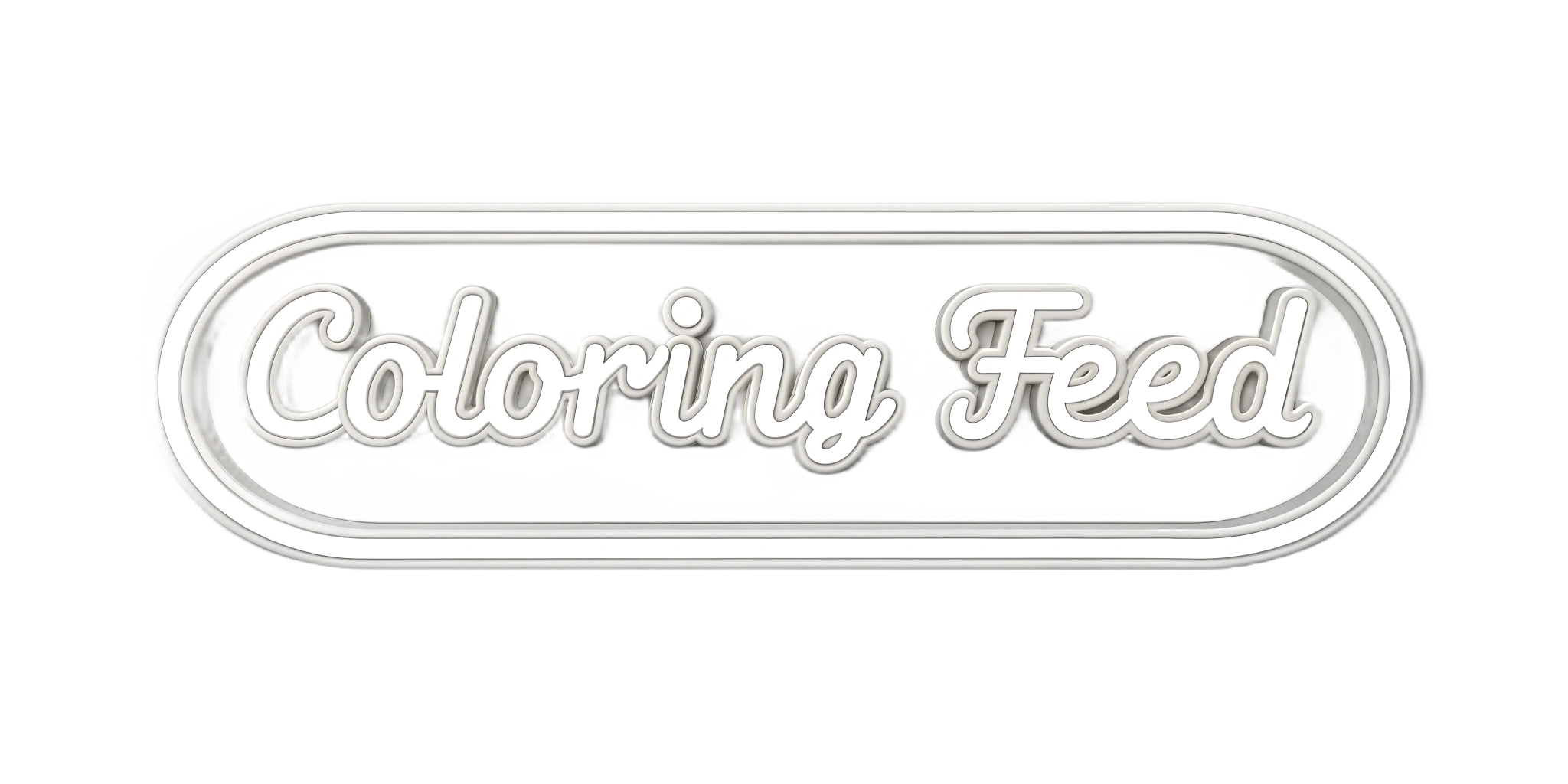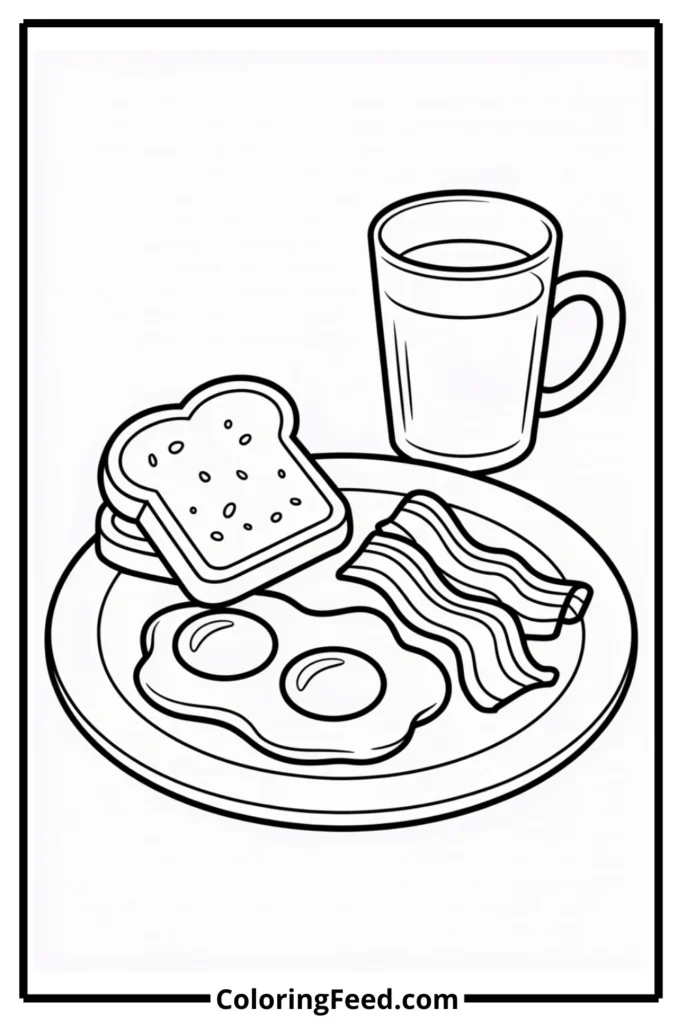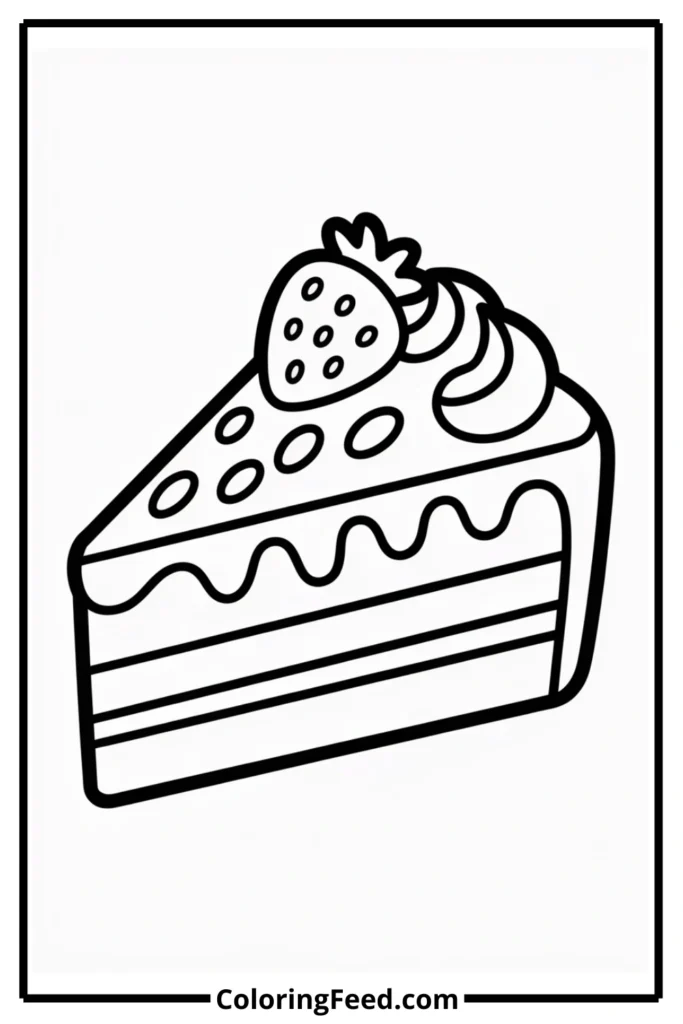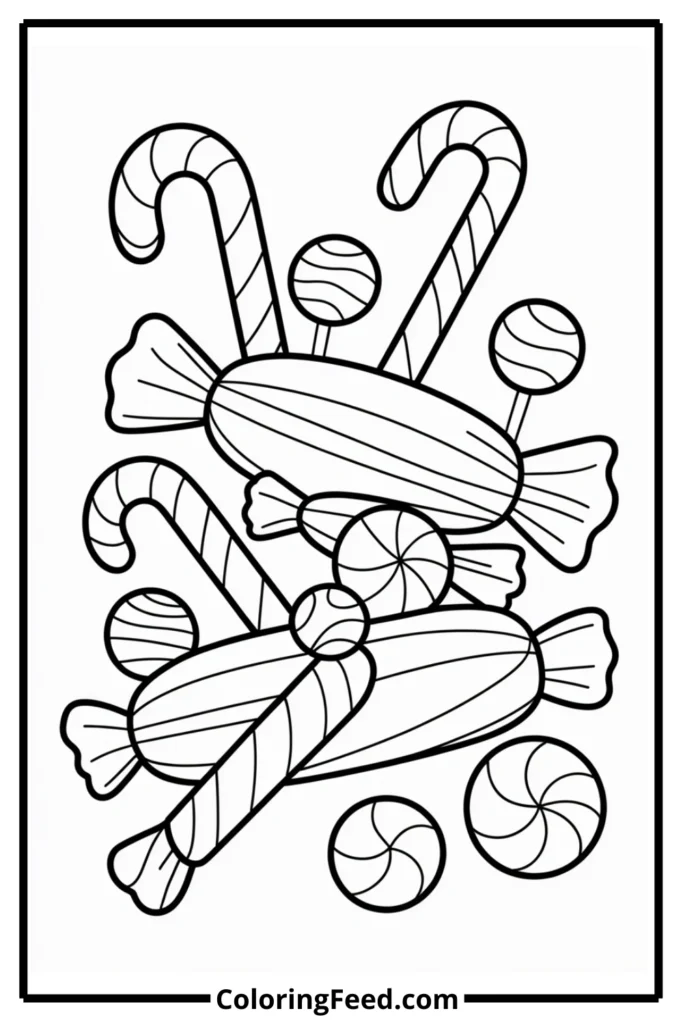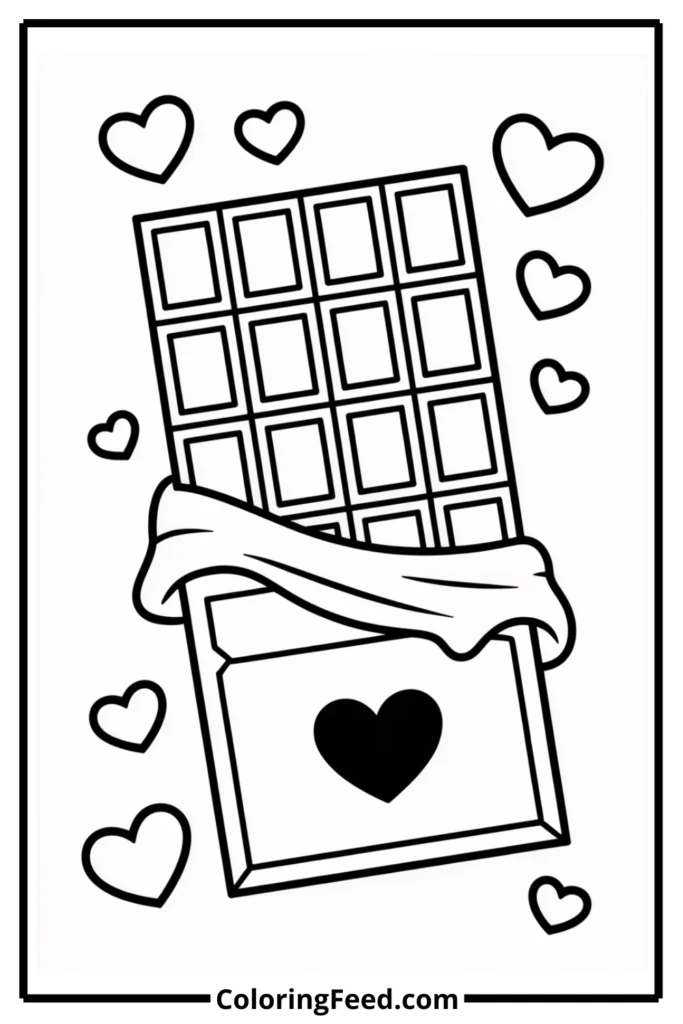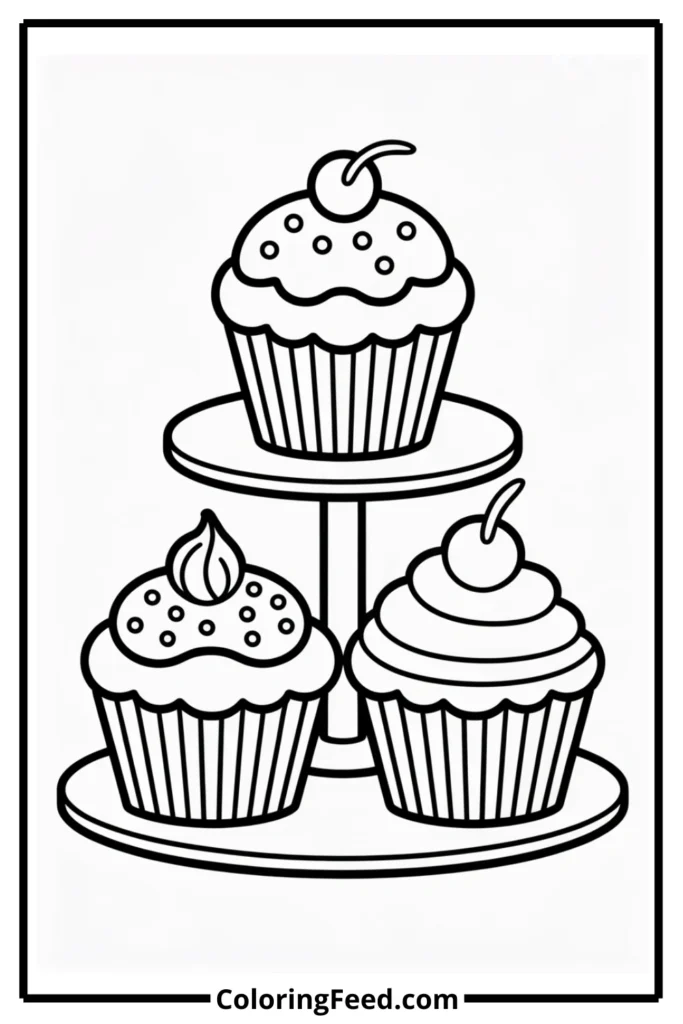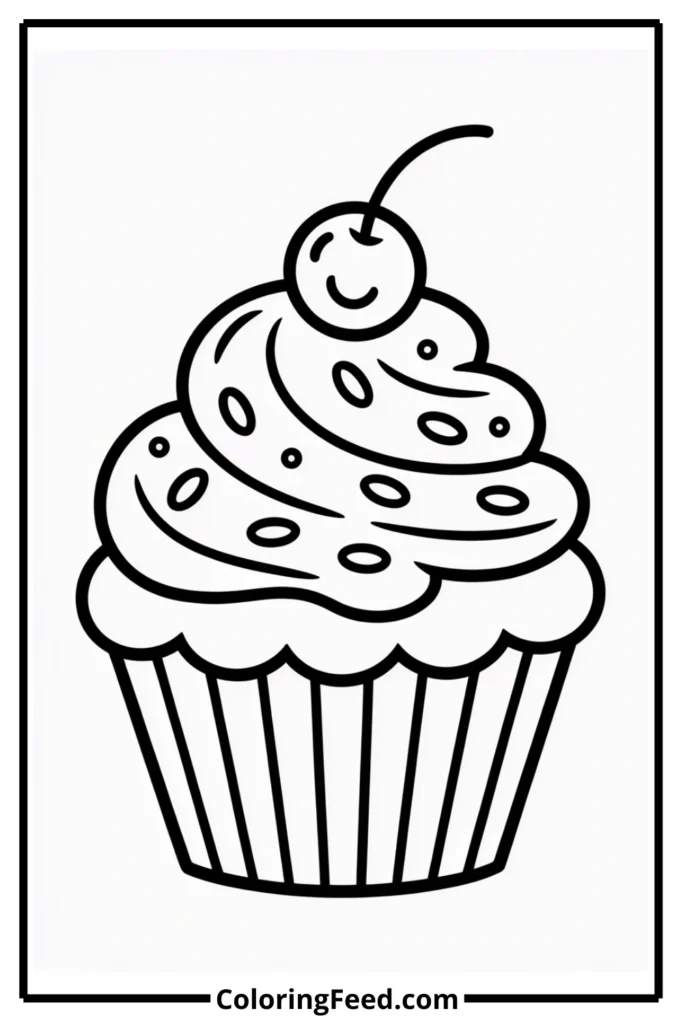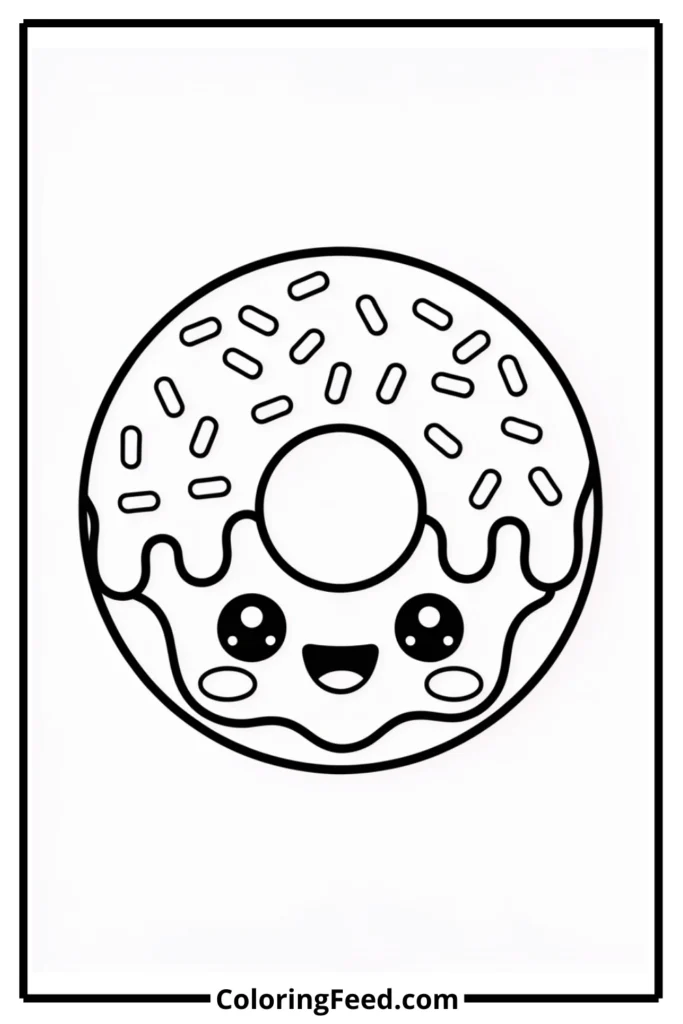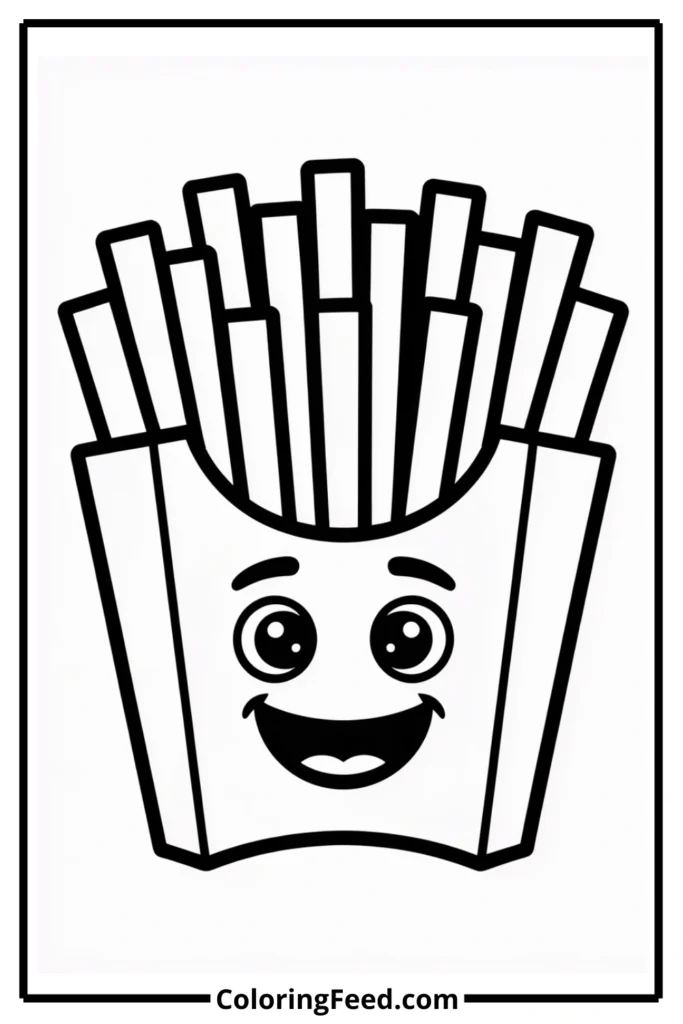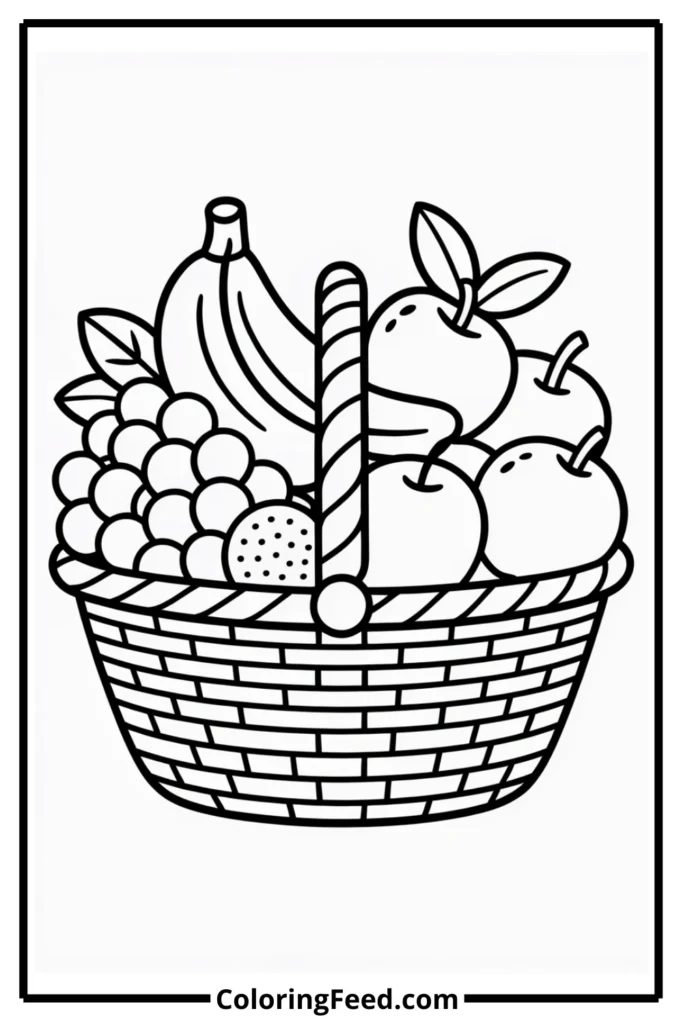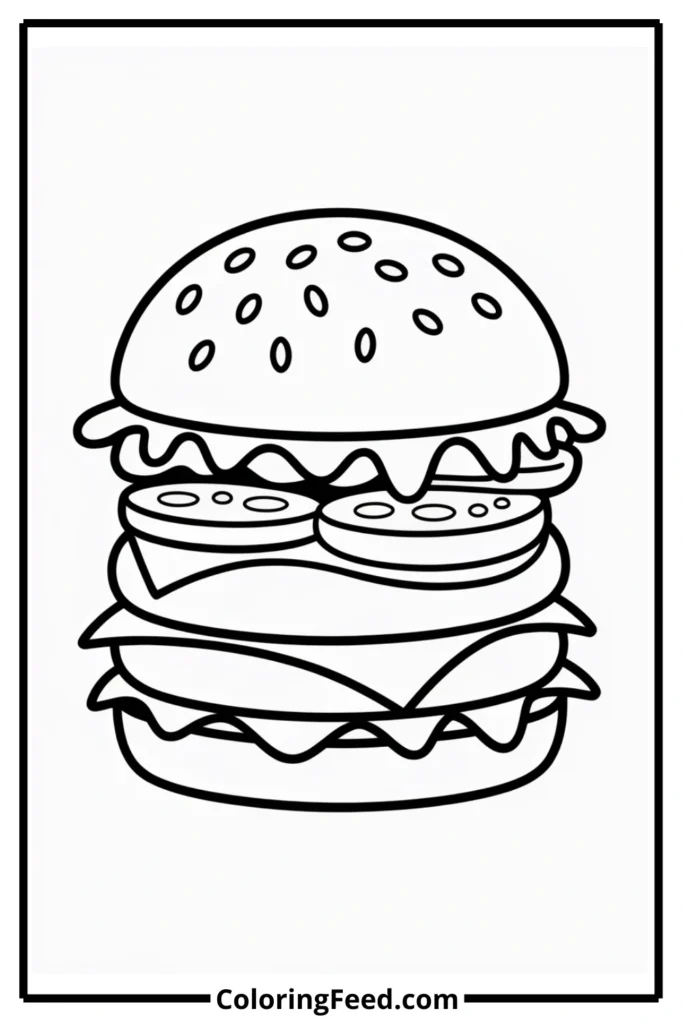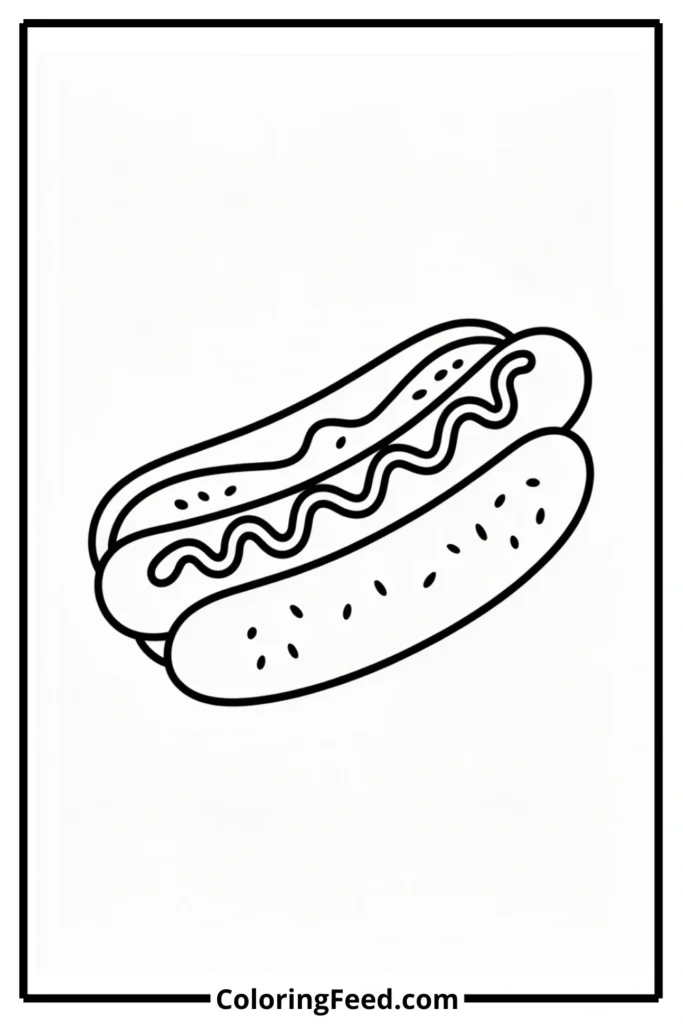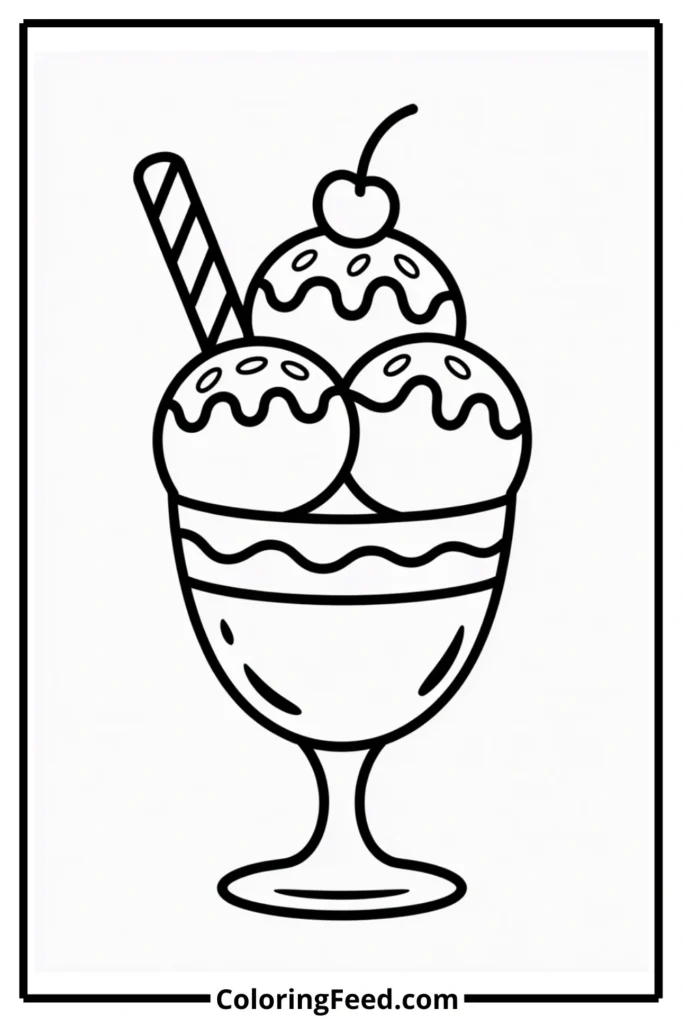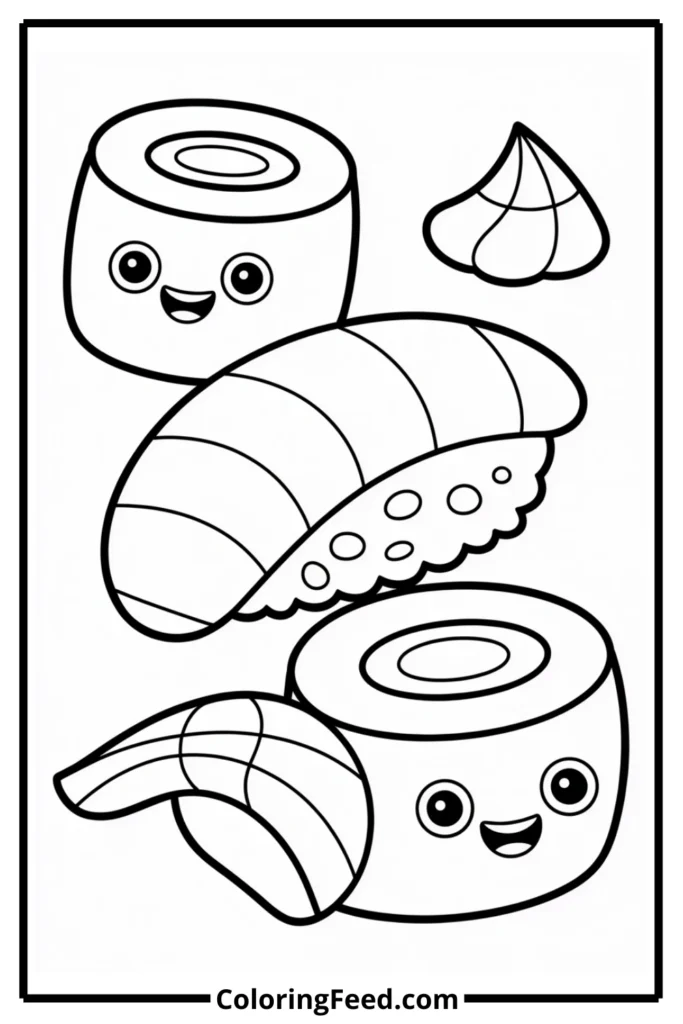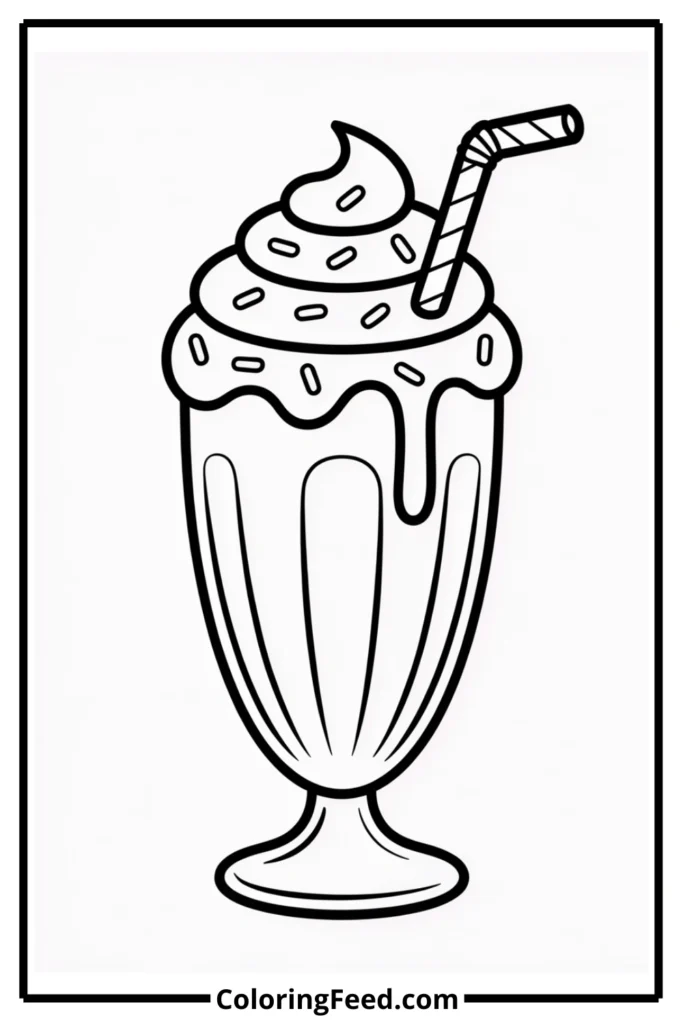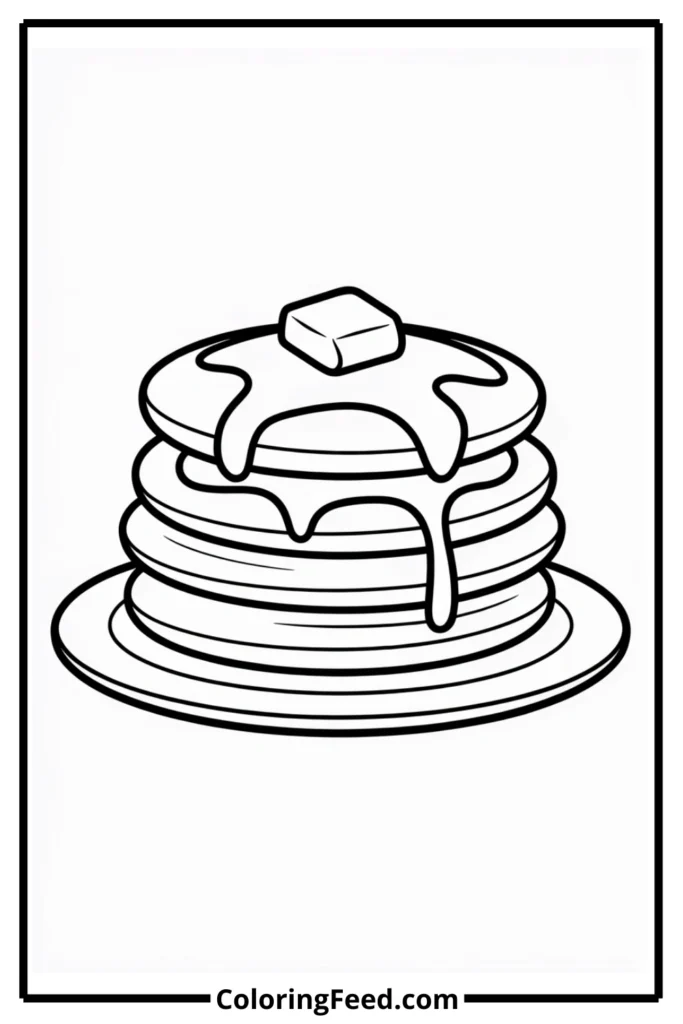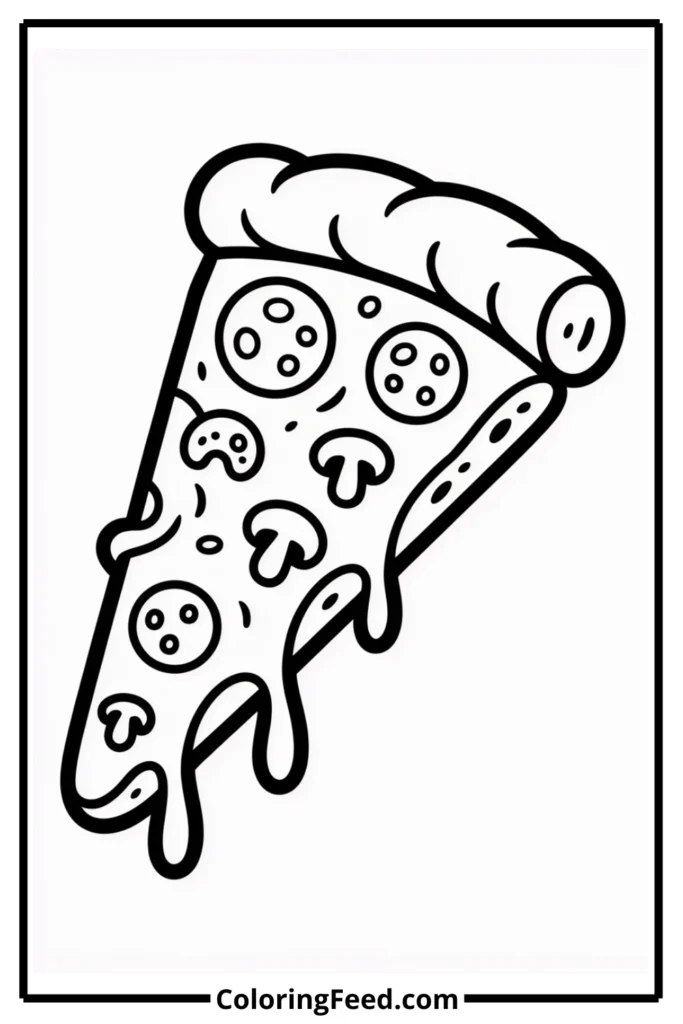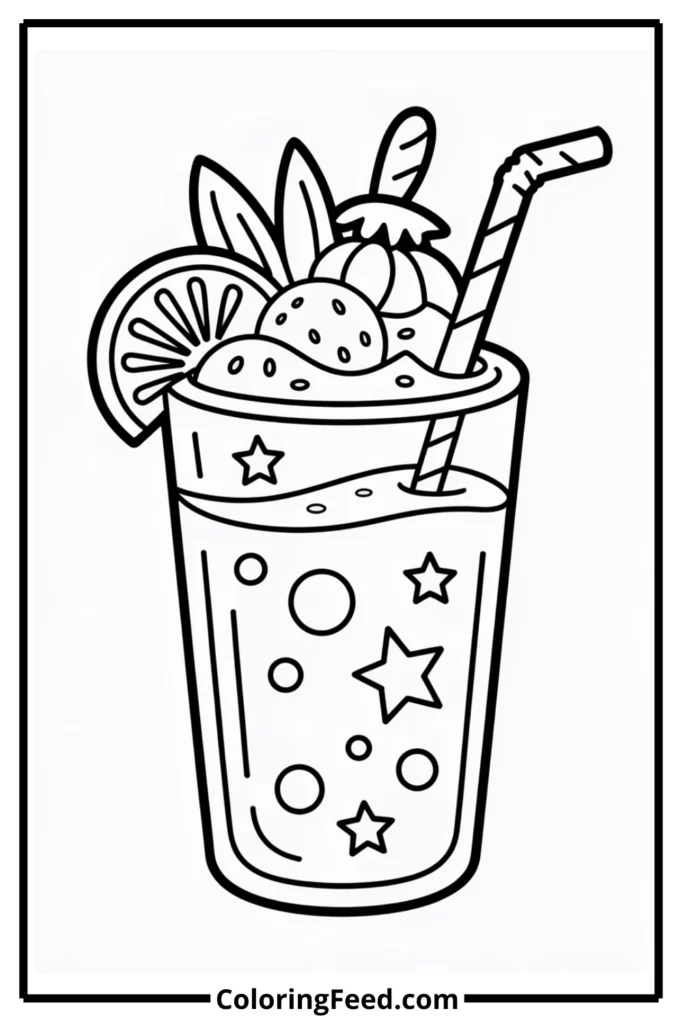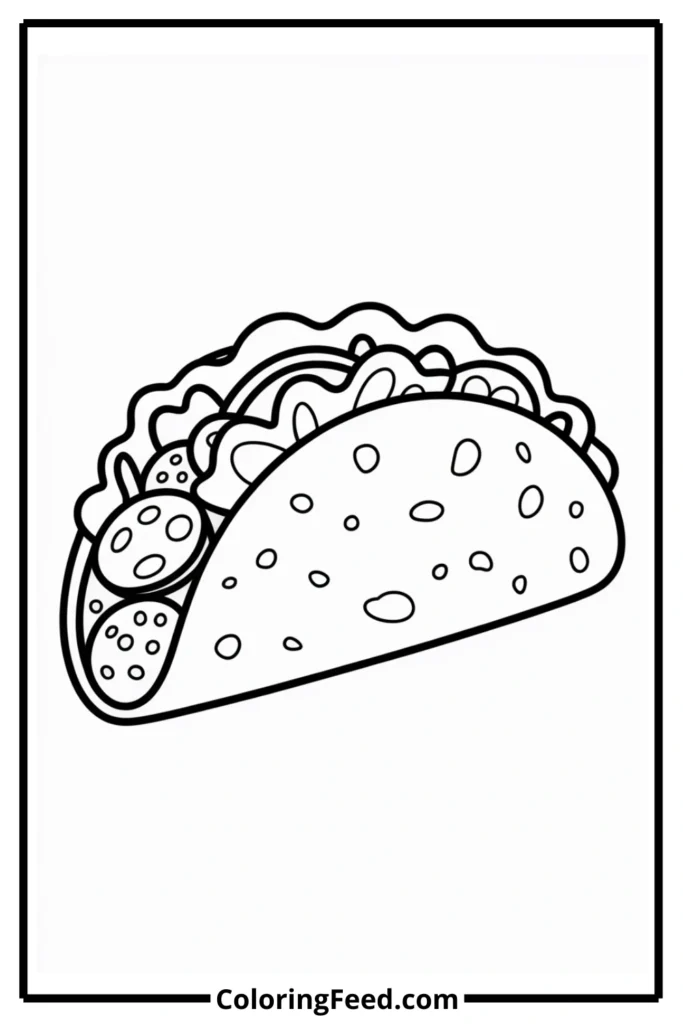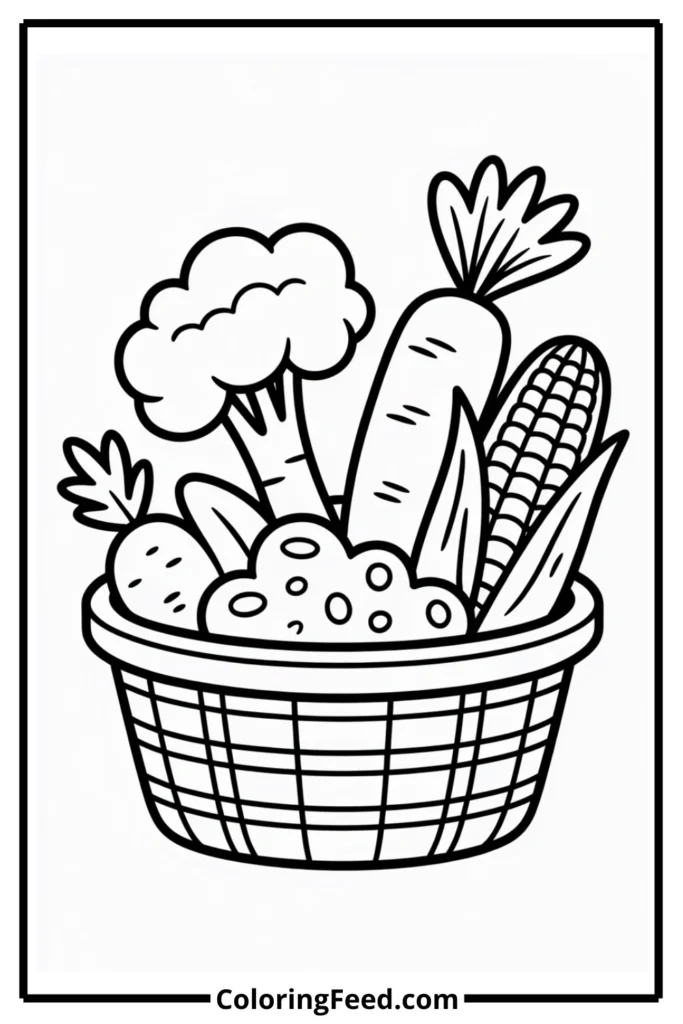We offer a wide collection of free, high-quality printable coloring pages for kids and adults. From cute animals to intricate mandalas, our designs bring creativity and relaxation to everyone. Download, print, and start coloring today!
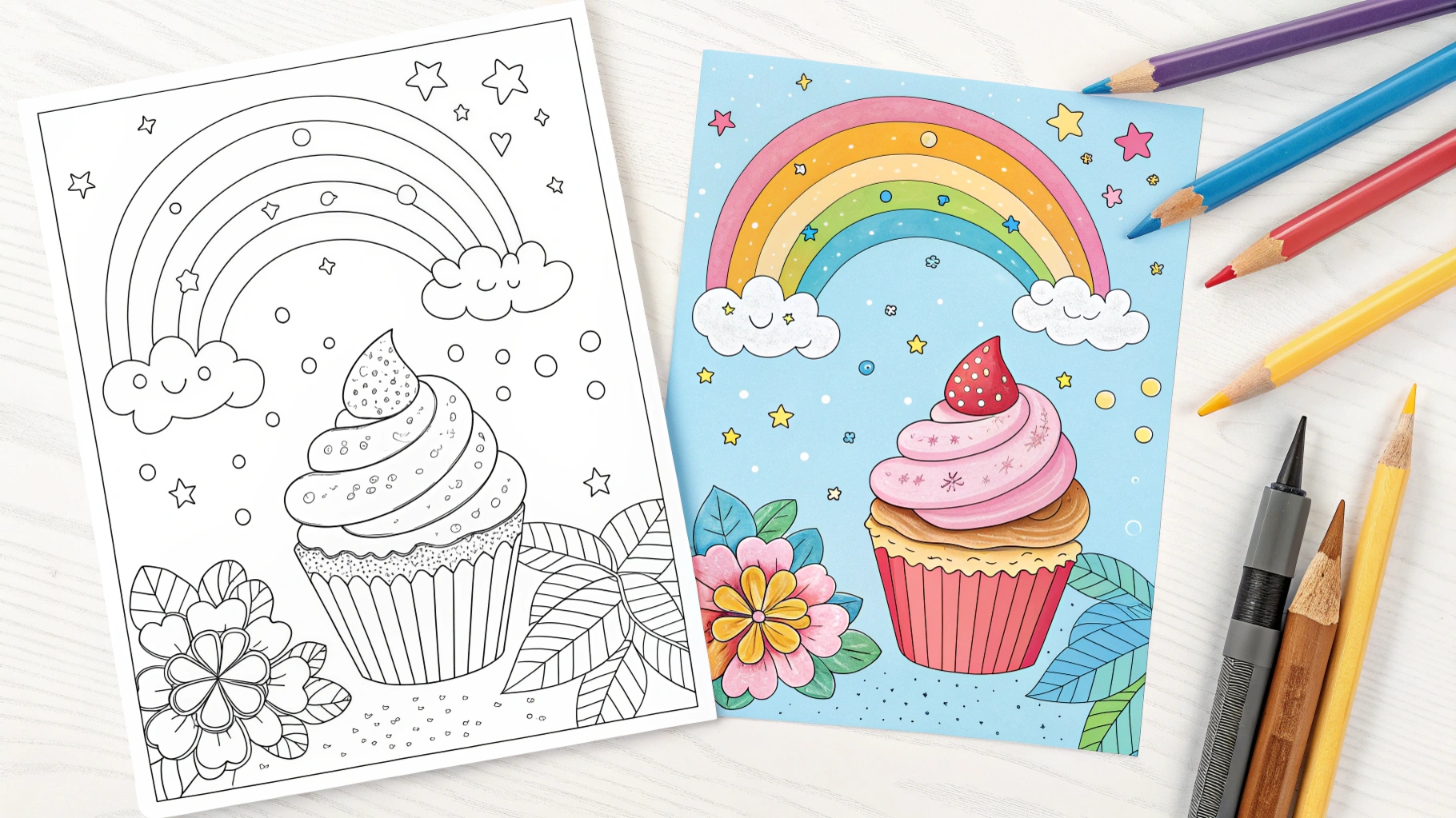
Food Coloring Pages – Fun and Creative Designs for All Ages
There’s something magical about combining two of life’s greatest pleasures: food and creativity. When I first discovered food coloring pages, I was amazed by how these delightful designs could capture a child’s imagination while sneaking in some valuable learning. Whether you’re looking for free food coloring pages to keep kids busy on a rainy afternoon or searching for printable food coloring pages that teach healthy eating habits, you’ve come to the right place.
Food-themed coloring activities have exploded in popularity, and for good reason. They offer the perfect blend of entertainment and education, making them ideal for parents, teachers, and anyone who loves combining art with appetite appeal.
To use any of these free printables, simply click on any of the images to open the high-resolution PDF in a new tab. From there, you can download or print as much as you like—totally free!
Each coloring page is designed for standard US letter size but also prints beautifully on A4 paper. Enjoy!
Table of Contents
Context – Why Food Coloring Pages Are So Popular
The Universal Love for Food and Culinary Art
Food speaks a universal language that crosses all cultural boundaries. From the moment we’re born, food becomes central to our comfort, celebration, and daily routines. This natural connection makes food illustrations incredibly relatable and engaging for colorists of all ages.
Think about it – when was the last time you saw a child’s face light up at the mention of pizza or ice cream? That same excitement translates beautifully to coloring activities. Food coloring pages tap into these positive associations, making the artistic experience more enjoyable and meaningful.
The culinary world has always been visual. Professional chefs understand that we “eat with our eyes first,” and this principle applies perfectly to coloring activities. When children see appealing food illustrations, they’re naturally drawn to engage with them. The vibrant colors of fresh produce, the rich textures of baked goods, and the playful presentation of favorite treats all translate beautifully into line art that begs to be colored.
Research in child psychology shows that children learn best when they’re emotionally engaged with the material. Food-themed activities leverage this natural emotional connection, making learning feel like play rather than work.
How Food Illustrations Make Learning More Engaging
Traditional educational materials can sometimes feel dry or disconnected from a child’s world. But food-themed coloring pages? They’re different. When kids color a bright red apple or a vibrant orange carrot, they’re not just creating art – they’re building vocabulary, learning about nutrition, and developing color recognition skills.
The visual appeal of food makes complex concepts more digestible (pun intended!). A child who might struggle to remember which foods are healthy can easily recall that colorful fruits and vegetables are good choices after spending time coloring detailed illustrations of them.
Educational experts have found that multi-sensory learning approaches are far more effective than traditional methods. Food coloring pages engage multiple learning pathways simultaneously. Children use their visual skills to recognize shapes and colors, their fine motor skills to control coloring tools, their cognitive abilities to make decisions about color choices, and their memory to recall information about different foods.
The tactile experience of coloring also helps cement learning. When a child carefully colors within the lines of a strawberry illustration, they’re creating muscle memory that connects the visual appearance of strawberries with positive, focused attention. This type of embodied learning often proves more lasting than passive absorption of information.
Why Kids and Adults Enjoy Food-Themed Pages
Food coloring pages offer something for everyone. Young children love the simple, recognizable shapes and the opportunity to use bright, bold colors. Meanwhile, adults appreciate the intricate details in complex food illustrations that provide a meditative coloring experience.
There’s also a nostalgic element at play. Many adults find themselves drawn to printable food coloring pages featuring comfort foods from their childhood – warm cookies, birthday cakes, or their favorite family recipes brought to life in black and white line art.
Educational and Creative Benefits of Food Coloring Pages
Teaching Kids About Fruits, Vegetables, and Healthy Eating
One of the most valuable aspects of food coloring pages is their educational potential. When children color various fruits and vegetables, they naturally learn to identify different foods and understand their characteristics.
Free food coloring pages featuring produce sections help kids recognize that healthy foods come in a rainbow of colors. They learn that strawberries are red, bananas are yellow, and broccoli is green. This color association strengthens their ability to make healthy food choices in real life.
Parents and teachers often use these coloring activities as conversation starters about nutrition. While a child colors an apple, you can discuss how apples help keep their teeth healthy and provide energy for play.
The educational value extends beyond simple identification. Smart coloring page designs often include subtle learning elements like cross-sections of fruits showing seeds, illustrations of how vegetables grow (carrots with their green tops, potatoes growing underground), or seasonal groupings that teach children when different foods are naturally available.
Many nutrition education programs now incorporate printable food coloring pages as standard teaching tools. Children who might resist listening to lectures about vitamins and minerals become engaged learners when the same information is presented through hands-on coloring activities. They’re more likely to remember that oranges contain vitamin C when they’ve spent time carefully coloring the segments of an orange illustration.
Studies have shown that children who participate in food-related art activities are more willing to try new foods in real life. The familiarity they develop through coloring reduces the natural hesitation many kids feel toward unfamiliar fruits and vegetables.
Strengthening Fine Motor Skills and Hand-Eye Coordination
Coloring within the lines of detailed food illustrations requires precision and control. This practice naturally develops fine motor skills that are essential for writing, using utensils, and other daily tasks.
The varying complexity of different food designs allows children to progress at their own pace. Simple fruit outlines help younger children practice basic coloring skills, while intricate patterns on decorated cakes or detailed vegetable illustrations challenge older kids to refine their technique.
Occupational therapists frequently recommend coloring activities as part of fine motor development programs. Food coloring pages offer particular advantages because the familiar subject matter keeps children engaged longer than abstract patterns might. A child working on grip strength and finger control will stay focused longer when coloring a detailed pizza with various toppings than when working with geometric shapes.
The bilateral coordination required for coloring – using one hand to hold the paper steady while the other controls the coloring tool – mirrors many real-world tasks. Children who regularly engage with detailed printable food coloring pages often show improved performance in activities like cutting with scissors, tying shoelaces, and manipulating small objects.
Different food illustrations naturally provide varying levels of fine motor challenge. The smooth curves of fruit require different hand movements than the straight lines of sandwich bread or the intricate details of decorated cookies. This variety ensures comprehensive motor skill development.
Boosting Creativity With Bright and Playful Food Designs
Food coloring pages encourage creative expression in unique ways. While children learn about realistic food colors, they’re also free to experiment with imaginative color schemes. Who says pizza can’t have purple pepperoni or that ice cream can’t be rainbow-colored?
This creative freedom helps children develop artistic confidence and personal style. They learn that art can be both realistic and fantastical, opening doors to broader creative thinking.
Relaxation and Mindfulness for Teens and Adults
The meditative quality of coloring has been scientifically proven to reduce stress and promote mindfulness. Food coloring pages designed for adults often feature intricate patterns within familiar food shapes – think mandala-style donuts or geometric pizza slices.
The familiar, comforting imagery of food combined with the rhythmic motion of coloring creates a perfect recipe for relaxation. Many adults find that spending 20-30 minutes coloring detailed food illustrations helps them unwind after a stressful day.
Coloring Tips for Food-Themed Designs
Using Realistic Colors for Educational Value
When the goal is education, encouraging realistic coloring choices maximizes learning potential. Help children identify the natural colors of different foods and discuss why these colors matter for nutrition.
Create a reference chart with real food photos alongside your printable food coloring pages. This visual guide helps children make connections between the coloring page and actual foods they see at meals or in the grocery store.
Consider seasonal discussions too. Talk about how some fruits change color as they ripen, or how the same vegetable might come in different colors – like red, yellow, and green bell peppers.
Experimenting With Fantasy Palettes
While realistic coloring has educational benefits, don’t forget the joy of creative experimentation! Fantasy food coloring opens up endless possibilities for imagination and artistic expression.
Encourage children to create:
- Rainbow layer cakes with every color of the spectrum
- Cotton candy clouds in pastel purples and pinks
- Magical ice cream flavors that don’t exist in real life
- Alien fruits with otherworldly color combinations
This type of creative coloring helps children understand that art can be both representational and purely imaginative.
Adding Texture to Bread, Cheese, Fruits, and Desserts
Teaching children about texture through coloring adds another dimension to their artistic skills. Show them how to use different coloring techniques to represent various food textures:
- Cross-hatching for the crusty surface of bread
- Stippling to create the bumpy skin of oranges
- Smooth, even strokes for the creamy surface of frosting
- Light, wispy strokes for the airy texture of whipped cream
These techniques not only improve artistic skills but also help children observe and appreciate the textural variety in real foods.
Choosing Age-Appropriate Complexity
Matching the complexity of food coloring pages to a child’s developmental stage ensures a positive, confidence-building experience. Here’s a quick guide:
Ages 2-4: Large, simple shapes like whole fruits, basic cookies, or ice cream cones with minimal detail.
Ages 5-7: Moderate detail such as pizza with toppings, decorated cupcakes, or fruit baskets with multiple items.
Ages 8-12: Complex designs featuring intricate patterns, detailed restaurant meals, or elaborate dessert displays.
Teens and Adults: Highly detailed illustrations with fine lines, complex patterns, and realistic food presentations.
Drawing Variations in Food Coloring Pages
Fruits and Vegetables for Kids’ Learning
Produce-themed coloring pages form the foundation of food-related educational activities. The best designs include both common favorites (apples, bananas, carrots) and less familiar options (dragon fruit, artichokes, star fruit) to expand children’s food vocabulary.
Look for free food coloring pages that group fruits and vegetables by color, season, or growing method. These organizational approaches reinforce learning while making the coloring experience more structured and educational.
Many effective fruit and vegetable pages include simple facts or labels, turning the coloring session into a mini-lesson about nutrition, growing seasons, or cultural food traditions.
Advanced Educational Approaches: Progressive educators are now using produce coloring pages in sophisticated ways. Some designs show the complete lifecycle of plants – from seed to mature fruit – helping children understand where food comes from. Others feature cross-sectional views that reveal internal structures, teaching basic botany concepts through art.
Seasonal produce pages connect children to natural growing cycles and environmental awareness. A fall-themed page might feature pumpkins, apples, and squash, while spring pages showcase asparagus, peas, and early berries. This approach helps children develop an understanding of sustainable eating and seasonal nutrition.
Cultural Diversity Through Produce: International fruit and vegetable coloring pages introduce children to foods from different cultures. Pages featuring tropical fruits like mangosteen, rambutan, or durian expand children’s awareness of global food diversity. Similarly, vegetables used in specific cultural cuisines – like bok choy, plantains, or cassava – provide opportunities for cultural education alongside nutritional learning.
Sweet Treats Like Cakes, Donuts, and Ice Cream
Dessert-themed coloring pages are perennial favorites because they feature foods that children already love. These designs often include elaborate decorative elements that provide excellent opportunities for creative expression.
Birthday cake pages might feature multiple layers, decorative borders, and space for children to add their own candle designs. Donut pages often include various toppings and glazes that children can color in realistic or fantastical ways.
Ice cream coloring pages range from simple single scoops perfect for toddlers to elaborate sundaes with multiple toppings that challenge older children’s attention to detail and color coordination skills.
Advanced Dessert Design Elements: Modern printable food coloring pages featuring desserts often incorporate sophisticated artistic elements. Mandala-style donuts with intricate geometric patterns provide meditative coloring experiences for older children and adults. Vintage-style bakery illustrations with detailed architectural elements (display cases, ornate cake stands, decorative packaging) combine food themes with historical and artistic education.
Therapeutic Benefits of Sweet-Themed Coloring: Psychologists note that dessert-themed coloring pages can provide particular emotional benefits. The association with celebration, comfort, and special occasions makes these pages especially effective for stress relief and mood enhancement. Children dealing with anxiety or difficult emotions often gravitate toward these comforting food images.
Educational Balance: While dessert pages are popular, the best collections balance them with healthier options and include subtle educational elements. Pages might show the ingredients that go into baking (flour, eggs, butter) or feature desserts made with healthier ingredients like fruit-based treats or whole grain options.
Fast Food Favorites
While we want to encourage healthy eating, there’s no denying that children are drawn to familiar fast food items. Printable food coloring pages featuring burgers, fries, and pizza can actually serve educational purposes when used thoughtfully.
These pages provide opportunities to discuss moderation, balanced eating, and the difference between everyday foods and occasional treats. They also tend to feature bold, simple shapes that are perfect for younger colorists who might struggle with more delicate fruit and vegetable designs.
International Cuisine
Expanding children’s cultural awareness through food coloring pages introduces them to the wonderful diversity of global cuisine. Pages featuring sushi, tacos, pasta dishes, or traditional holiday foods from various cultures spark conversations about different countries and traditions.
These internationally-themed food coloring pages work particularly well in classroom settings where teachers want to incorporate multicultural education into art activities. They provide natural opportunities to discuss geography, cultural traditions, and the universal importance of food in human culture.
Cultural Education Through Food Art: Smart international food coloring pages go beyond simple illustrations to include cultural context. A page featuring dim sum might include information about Chinese tea culture. Taco pages could introduce children to Mexican festival traditions. Pasta coloring pages might explore the regional variations found throughout Italy.
Many educators use these pages as part of “food passport” activities, where children color and learn about one international dish each week, gradually building a collection that represents global food diversity.
Building Cultural Sensitivity: International food coloring pages help children develop appreciation for cultural differences and similarities. When a child colors traditional Indian curry or Japanese bento boxes, they’re learning that people around the world have different but equally valid food traditions.
Language Learning Integration: Progressive language learning programs now incorporate international food coloring pages to teach vocabulary in different languages. Children might learn the Spanish words for taco ingredients while coloring, or practice French vocabulary while working on crepe illustrations.
Cute Cartoon-Style Food With Faces
Anthropomorphic food characters – fruits with smiling faces, vegetables with personalities, or animated pizza slices – add an element of whimsy that particularly appeals to younger children.
These character-style coloring pages often tell visual stories or convey emotions through facial expressions, adding narrative elements to the coloring experience. A happy broccoli character might help children develop more positive associations with healthy vegetables.
Detailed Artistic Food Illustrations for Adults
Adult food coloring pages feature sophisticated designs that challenge artistic skills while providing stress relief. These might include:
- Botanical-style illustrations of herbs and spices with scientific detail
- Elaborate table settings with fine china and complex patterns
- Realistic still-life compositions featuring multiple food items
- Art nouveau-style designs incorporating food motifs
- Mandala patterns built around food shapes and themes
Who Can Enjoy Food Coloring Pages?
Preschoolers Learning About Healthy Foods The earliest years are perfect for introducing food concepts through simple, colorful pages. Preschoolers benefit from large, basic shapes that help them practice staying within lines while learning to identify common foods. The repetitive motion of coloring also supports pre-writing skill development.
Kids Enjoying Fun and Silly Food Characters Elementary-age children love food characters with personalities. These anthropomorphic designs make healthy foods seem more appealing and create positive associations with nutritious choices. The storytelling element engages imagination while developing artistic skills.
Families Using Coloring for Mealtime Learning Activities Free food coloring pages can transform regular family time into educational experiences. Parents might use these pages before cooking together, as conversation starters about trying new foods, or as quiet activities during meal planning discussions.
Adults Seeking Creative Relaxation Through Food Art The adult coloring book trend has embraced food themes because they combine familiar, comforting imagery with artistic challenge. Food illustrations offer the perfect balance of recognizable subjects and intricate detail that promotes mindful focus and stress relief.
FAQs – Food Coloring Pages
Are food coloring pages educational for kids? Absolutely! Food coloring pages serve multiple educational purposes. They help children learn food identification, color recognition, and basic nutrition concepts. When paired with conversations about healthy eating, they become powerful tools for developing positive relationships with nutritious foods.
Do they include both simple and detailed food designs? Yes, the best collections of printable food coloring pages offer designs for all skill levels. Simple outlines work perfectly for toddlers and preschoolers, while intricate patterns and detailed illustrations challenge older children and adults. This variety ensures that everyone in the family can participate at their appropriate level.
Can food coloring pages help teach about healthy eating? Definitely! When children spend time coloring fruits, vegetables, and balanced meals, they naturally become more familiar with healthy food options. This visual reinforcement, combined with positive discussions about nutrition, helps build lifelong healthy eating habits.
Are there fantasy-style food illustrations (like kawaii food)? The world of food coloring pages includes everything from realistic botanical illustrations to cute kawaii-style characters with big eyes and sweet expressions. Fantasy elements like rainbow cakes, magical fruits, and anthropomorphic vegetables add whimsy and creative appeal to the coloring experience.
Do adults also enjoy food-themed coloring pages? Adult participation in food-themed coloring has grown tremendously. Many adults find that the familiar, comforting imagery of food combined with intricate artistic details provides the perfect meditative coloring experience. Food illustrations often evoke positive memories and emotions, making them particularly appealing for stress relief and relaxation.
Conclusion
Food coloring pages represent far more than simple entertainment – they’re gateways to learning, creativity, and family connection. Whether you’re downloading free food coloring pages for a quick rainy-day activity or investing time in detailed printable food coloring pages for educational purposes, you’re providing valuable developmental opportunities.
The beauty of food-themed coloring lies in its universal appeal and educational potential. These activities naturally combine art with nutrition education, fine motor skill development with cultural awareness, and individual creativity with family bonding opportunities.
From simple fruit outlines that help toddlers learn colors to intricate culinary scenes that challenge adult artists, food coloring pages adapt to every age and skill level. They transform ordinary downtime into valuable learning experiences while creating positive associations with healthy foods and creative expression.
So grab your colored pencils, print out some delicious designs, and discover how food coloring pages can add flavor to your family’s artistic adventures. You’ll be amazed at how much learning and joy can emerge from something as simple as coloring your favorite foods!
